heartlines
Jessica Allan
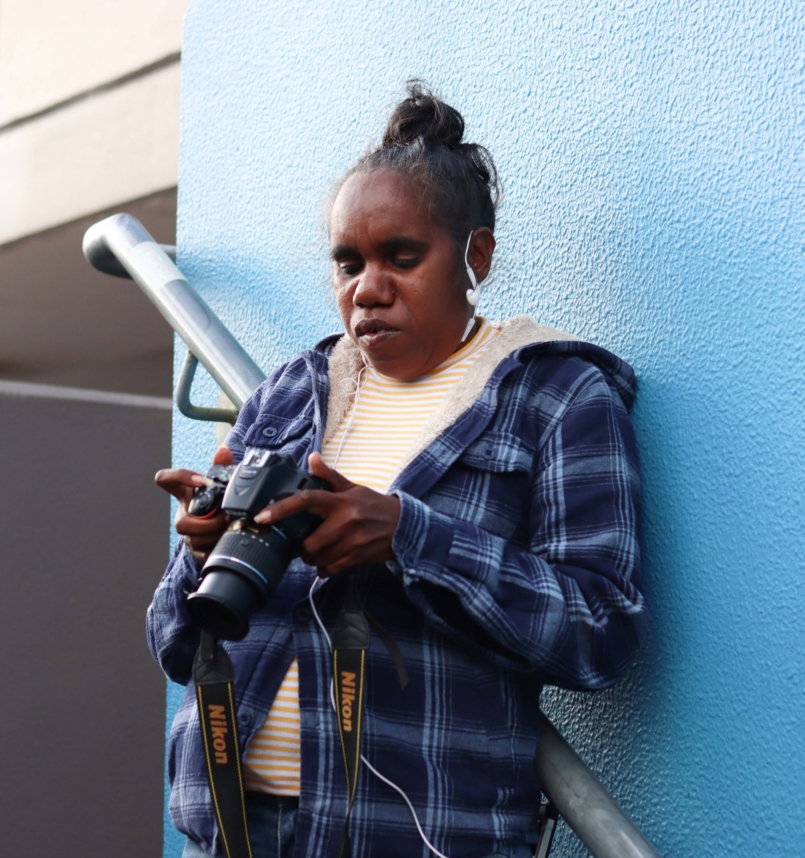
Heartlines explores what it means to tell stories – from the heart and soul – and where that story takes us. Every storyteller’s journey is different, so we invite you to take a moment to read, pause and reflect on what it means to shape stories for the page (or screen).
Jessica Allan is a photographer from the Pilbara. We first met Jess on a trip to Roebourne while collecting stories from members in the community. It was clear when we first met Jess that she had many stories to tell. Her favourite way to tell stories is through the camera lens. Since then, we’ve been working with Jess to help enhance her already well-established skill set, develop a portfolio, and, through the help of the Writing Change, Writing Inclusion mentoring program, work on writing a photographic essay. Get to know more about Jess below.
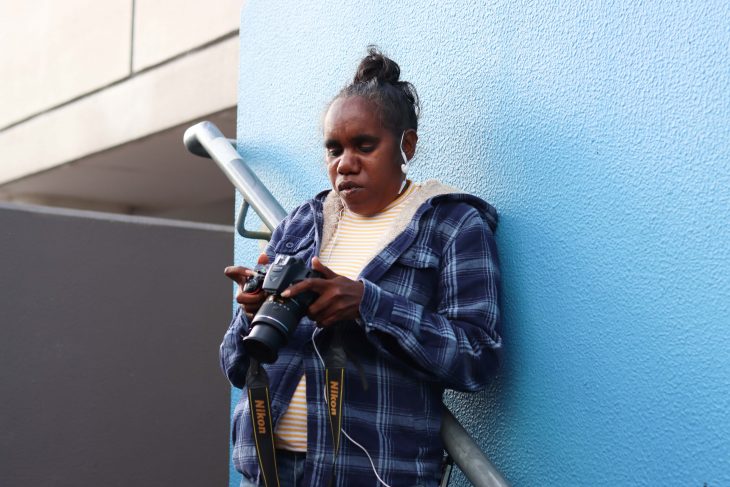
Logan Griffiths: Jess, tell me about yourself. Where did you grow up? What was your childhood like?
Jessica Allan: My name is Jessica Allan and I grew up in Western Australia, in the Pilbara, Roebourne. But mostly my childhood goes way back to being in the community because I grew up in Wickham, I went to school in Wickham – we’d, like, go out bush back and forth between schooling and then holidays – and the community called Ngurrawaana, south east of Karratha.
My mum and dad stay there and I was kind of back and forth, like going bush, going hunting, and looking for bush food and all that, and just enjoying the company of the Elders and other kids. And especially going out bush with my auntie who was quite special to me, but she passed on last year. So I’ve got so many, many good memories of Roebourne. And I haven’t been back home – ‘Ngurrawaana’ means ‘going back home’ in our language. And the community has about five to ten people. But some families go back home to heal. Whenever they have, like, in a way some families have drinking problems, or fights, something like that. They tend to go back home and it’s their healing place.
LG: That’s comforting to know that you can always go back to Ngurrawaana. That it’s a place where you can get grounded, spend time on Country with family and heal. And you know that you’re going to feel better. So, that’s where you grew up and now you live in Roebourne?
JA: So, I worked as a ranger for maybe five, six years now. But I’m no longer a ranger anymore because we moved into town [Roebourne] to look for work. Being a ranger involved cutting trees, killing weeds, looking out for the Country, also looking after Millstream, and keeping the place clean.
LG: You’re very passionate about caring for Country and your family. Is that what got you into photography?
JA: I do care much about family, Country, photography, and my partner. It’s really good to have these times in your life and moments, you know, coming and taking photos with families. But I also like to capture landscape and sunsets.
But anyway, going back to before getting into the ranger program, at first we didn’t have any work-clothes, we just had normal clothes. But we would go out traveling to Fortescue River and my cousin brother would take his car cause we would go out and just explore the Country and to see where the bad weeds were growing. So we would cut them and then spray. And that’s where my photography started, which I didn’t have a camera at first, I had a mobile phone. I would just take, you know, little snaps of the place and what the fellas were doing. And even recording, even my cousin brothers or sister would record us doing what we doing. Or I would just be behind the camera, my mobile phone. And anyways, over the years, going back and forth to Millstream and Fortescue River, it’s like maybe four or five hour drive back and forth. And anyways, a friend of mine said to me, “Jess, I think you’re getting into taking photos of Country and the people around you, you should get a camera, you know?” And I’m like, “What do you mean, dude?” And anyways, he laughed and said, “You know, a quality camera, a good camera that takes good photos.” And I’m like, “Okay.”
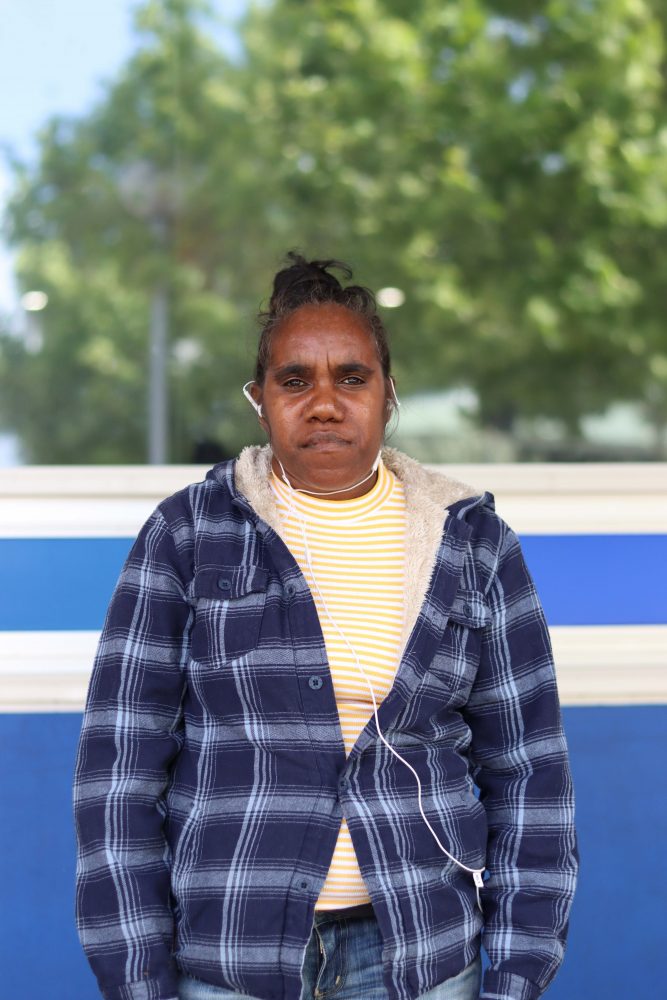
Because we live out in the community, we would need to get up at five or six in the morning for work. Sometimes I would get up before the guys and I’ll be there the first with my cup of tea, knocking on the door, “Come on, you guys get up, let’s go.” And then we would go camping at Millstream. So I’d take some photos of sunrises and sunsets, which is quite difficult. So that’s how I got into photography. And over the years, my cousin and her partner, that’s where my first camera came from. I got a Nikon D5200. That was my first camera. When I was working as a ranger, I saved up $900. And my cousin and her partner, they like pitched in. And that’s where it started.
LG: When you got your new camera, did you have to drive into town to buy it? Did you have any training to use it?
JA: I went into town, to Karratha. When I got the camera, I was like curious, you know, with the settings with the lens and the camera itself. And I taught myself, like going out bush, taking photos of the community, the cattle, horses and other animals, especially snakes that we have to be careful of.
LG: That’s how your photography journey started. But now you’ve been taking photographs for a pretty long time. Why do you take photographs now?
JA: Well, actually that’s a good question because when I was a little girl growing up in another community, Cheeditha, I grew up there around my other families, cousins, sisters, and brothers. And my Auntie’s brother, he was white, actually he grew up with the Aboriginal people. And he used to take his camera and he had an old Toyota ute and he would take his camera everywhere and he would take photos of us kids. Photos of all my cousins, brothers and my aunties when they were young and they were kids. And that’s how photography for me has come in to my life because my Auntie’s brother, he will take his camera everywhere. That’s how he inspired me. That’s how I got into photography. He inspired me.
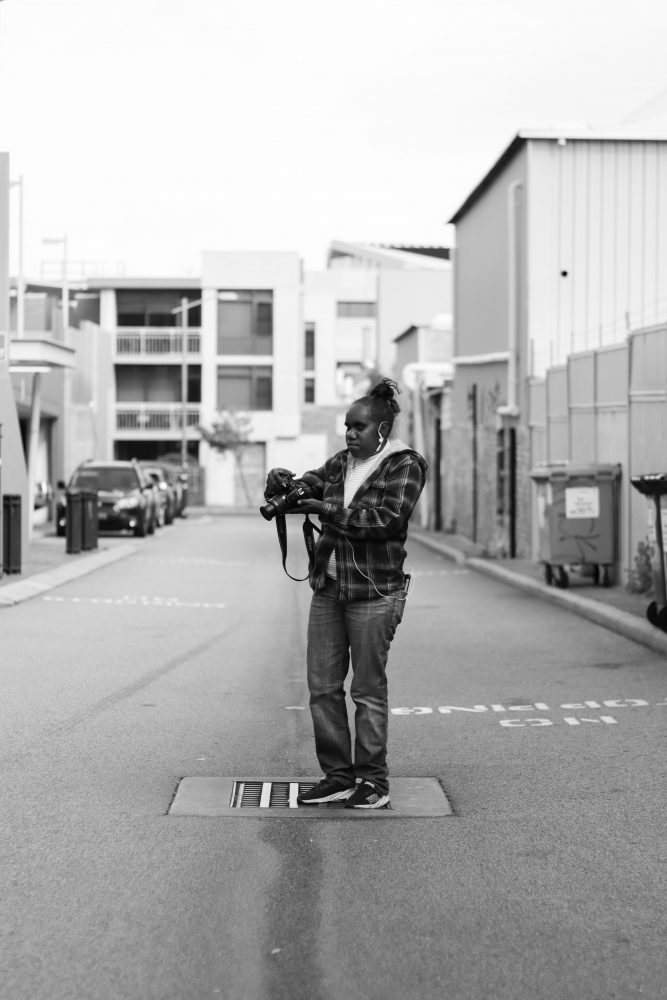
LG: A picture says a thousand words, or that’s what they say. What stories are you telling through your photography?
JA: Photos tell a lot of stories and has a meaning. For example, my nephew, he’s quite cheeky. He’s can be playful. And the thing is what I want to capture in families is their personality. Also, photography is important because people around the world that haven’t been to Millstream can see it through my photos. My grandmother and my grandfather’s country tells a lot of stories. So that’s why I want to take photographs of Millstream, of the Country, we call it ‘Ngurra’ in language. It’s significant to my people. Because they have a way of telling their own story. It has a meaning because of our dream time stories, it’s about the dream time snake. So that’s why it is important. But there are some places that are special and some of the places that I don’t photograph. Cause I was told by my Elders, not to photograph this place or this place because it is significant because of the dream time snake. When we go out to Country, we have to show the dream time snake respect. But also tell him who we are, we talk in language. When we go to a particular place, for instance, we go to his resting place, that’s where we go to respect him. So he won’t harm us when we say, who we are in language and I’ll go to my Country and I get water in my hands and I spit it out and I say, ‘Ngurra’ – Country, we’ve come to see the place.
LG: What does this opportunity, coming down to Perth and spending time here at Centre for Stories, mean to you?
JA: Well actually this is kind of new to me. You know, I’ve never been to this place, but now that I’m here and seeing you guys and getting to know you guys more – and to learn more about photography, you know? So the opportunity is to learn, the opportunities to move forward and not go back. I’ve come a long way from where I was as a ranger to here.
LG: All week you’ve been meeting with different people in Perth and they’ve all been really impressed with your skills as someone who is self-taught and you’ve picked up so much stuff this week. So how has that experience been for you?
JA: I think I’ve done pretty well. And especially spending time with Isabel Marcelo, she has taught me her editing skills and also with Chris Gurney, his film and editing skills are cool, awesome. They’ve showed me their skills and I’ve also taught them my editing skills. It’s quite different to share information.
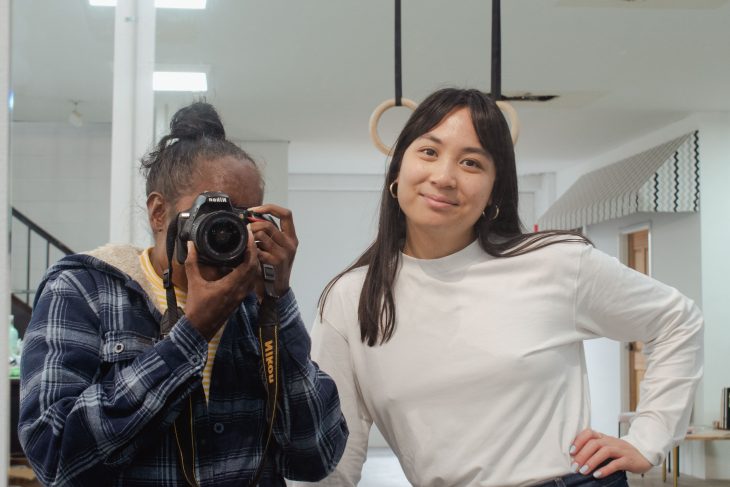
Jessica Allan and Isabel Marcelo.
LG: Tell me a little bit about how you met Caroline and Sisonke.
JA: I met Caroline’s daughter first, Sharmila. Sharmila’s face is quite familiar because I’ve met her before through my grandmother, who has passed. When I first met her I said, “You are familiar, you know. Because my grandmother used to talk about you.” I remember quite well that Sharmila was beautiful with short dark curly hair. And Sharmila used to spend a lot of time in Millstream with the Elders. Then recently, Sharmila introduced me to Caroline and Sisonke from Centre for Stories. They wanted to meet me and get my story. So they spent a little bit of time there. So that’s the first time I’d met Caroline and Sisonke. Then they invited me to Centre for Stories. I was quite happy and excited, you know? I mean, I used to come down [to Perth] for ear operations, but now this is different, this is for me. I was quite nervous, you know, because it’s been a while since I’ve been to Perth. It was good catching up and that’s the first time I realised that Caroline was Sharmila’s mum. I have met a lot of people in Perth, some from way back and then also looking forward and meeting new people.
LG: What do you want to do in the future with your photography?
JA: My hope is that my photography can capture stories and bring people together, especially families, no matter the skin colour, come to me. If they want family photos. Because a story can teach you a lot about the person. Photos are my way of showing the world through my eyes, and through my lenses. Also I do want to get my photography, business up and running, yeah, start my business.
Jessica Allan is a photographer from Roeburne, Western Australia.
Logan Griffiths is the program coordinator at Centre for Stories where she is currently managing the Writing Change, Writing Inclusion program.
Writing Change, Writing Inclusion is Centre for Stories’ signature writing program for 2021 to 2023. Generously funded by The Ian Potter Foundation, Australia Council for the Arts and Centre for Stories Founders Circle, this writing program features mentoring, hot desk, and publication opportunities for emerging writers from culturally and linguistically diverse backgrounds and/or Aboriginal and/or Torres Strait Islander backgrounds.
Copyright © 2021 Jessica Allan.
This interview and corresponding images have been licensed to the Centre for Stories by the Storyteller. For reproduction and distribution of this interview, please contact the Centre for Stories.
This interview was published on 15 November 2021.